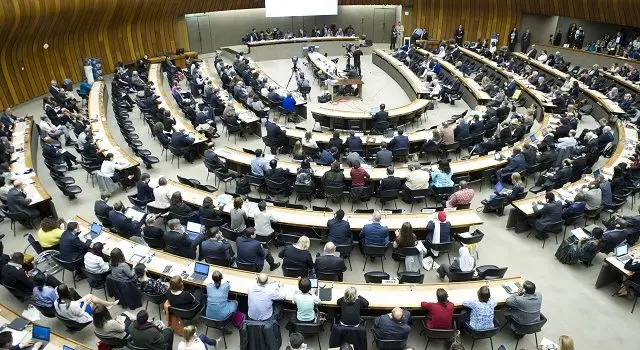Digital health interventions (DHI) are here to stay, and they keep growing. By 2020, there were nearly 7 billion mobile phone and nearly 4 billion smartphone users. From text messaging platforms, mobile (mHealth) apps, telehealth consultations, and wearable devices, healthcare aided by digital tools has expanded, partly propelled by the COVID-19 pandemic, and with the potential to reach greater numbers of those needing cardiovascular care.
Electronic decision support tools are another digital resource that can, for example, draw on electronic records to provide alerts about patients’ heart condition and make improvements in the use of medication. Additional developments include artificial intelligence as a support tool in interpreting medical images.
The World Heart Federation Roadmap for Digital Health in Cardiology assesses the opportunities of DHIs to tackle cardiovascular disease (CVD) and identifies solutions to potential roadblocks in the process. For the more than 500 million people living with heart disease, DHIs represent another avenue for care, especially in places where workforce capacity is strained, and some tasks can be undertaken virtually. DHIs can empower patients and providers, contribute to universal health services coverage, improve long-term patient outcomes, and care experience, and reduce healthcare costs.
Roadblocks to implementing DHIs encompass issues such as adequate internet coverage and access, reimbursement plans for care delivered by DHIs, privacy regulations, and provider and patient literacy. Such challenges are reflected in the responses of more than 227 participants surveyed in 71 WHF Member countries. All point to lack of national guidelines or an investment strategy, unsuitable infrastructure of healthcare provider systems, and variable data collection and storage. Other obstacles identified were inadequate involvement of national stakeholders, along with poor understanding of health workforce needs, underestimated effectiveness, and mistrust in security of data.
Challenges and approaches in adopting DHIs will necessarily differ as many low- and middle-income countries (LMICs) still experience poor internet connection. Conditions for facilitating strengthened health systems that facilitate DHI uptake reflect WHO recommendations: digital infrastructure, information and communications technology, reimbursement plans, and workforce and patient training to use digital tools.
Overcoming obstacles therefore requires software, hardware, connectivity, maintenance support, and reliable data storage and security. Ensuring compatibility among data systems and platforms is indispensable alongside educating and empowering workers and patients in using digital tools of care.
Positive steps would entail eHealth strategies, monitoring and evaluation of DHIs’ effectiveness, guidelines on data access and security, clear reimbursement plans for DHI, inclusion of practitioners and patients in the early design phases, investment in digital health infrastructure, and education.
The Roadmap for Digital Health in Cardiology captures some practical examples of DHIs in diverse settings. One example involves emergency care in a rural setting via video televisit with patient data uploaded to a streaming cloud; another is the use of the mPower health platform, launched by WHO, that uses technology and task-shifting to assess risk, and monitor and meet needs of patients. The Consumer Navigation of Electronic Cardiovascular Tools (CONNECT) intervention is a consumer-focused, responsive web application, based on data from the patient’s primary care electronic health record. Co-designed with consumers, clinicians, and software developer, CONNECT includes digital reminders and access to information about medical conditions and medicines, and promotes risk awareness, goal-setting, progress tracking, virtual rewards and polling to facilitate interactivity and exchange.
The horizon for different forms of healthcare delivered via digital means is continually expanding. Ensuring equally wide access by all of us to such care is essential to reduce the incidence and mortality of cardiovascular disease. The Roadmap for Digital Health in Cardiology makes the case for strategic planning, health systems, investment, and engagement with patients and other multisectoral stakeholders. There might not always be immediate solutions – ‘trial and error’ are often part of the learning path – but this is an unmissable moment to reinvigorate hope for cardiovascular health for everyone.
WORLD HEART FEDERATION ROADMAPS are global frameworks that summarise recommendations to reduce the burden of CVD, developed with the expertise of peers and co-chairs of the process as listed in the full Roadmap on which this article is based. They highlight obstacles to implementation and propose solutions, tools, and strategies for adaptation to needs, regions and contexts. WHF Roadmaps enable an analysis of the current health system based on tools such as WHF CVD Scorecards, roundtables with multiple stakeholders, and subsequent implementation plans. WHF Roadmaps empower our Members, including CVD foundations, societies, and patient associations, to lead country-specific, action-oriented initiatives and involve diverse stakeholders, such as:
Governments and policymakers
- NGOs, health activists and advocates
- Healthcare professionals
- Corporate entities
- Academic and research institutions
- Patients and patient groups
TO DOWNLOAD THE FULL ROADMAP, VISIT: CVDROADMAPS.ORG
We also thank Astra Zeneca for their sponsorship of the WHF Roadmap for Digital Health in Cardiology as well as Aktiia and Escope for their support of the initiative.


